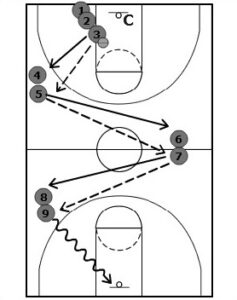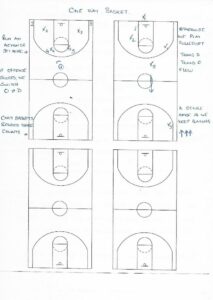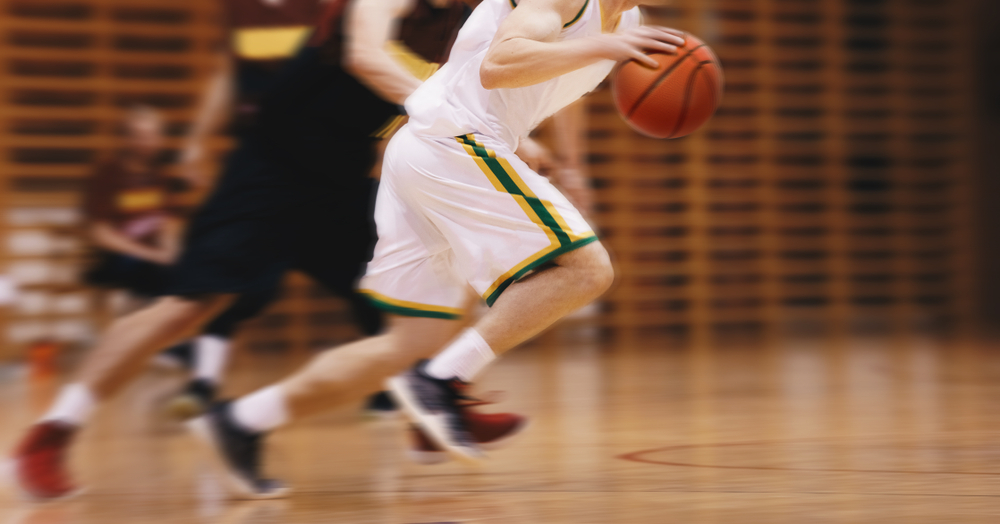Youth player development can be an avenue for coaches to share their love of the game. But if a team is going to be successful, it takes more than just love. Coaches are tasked with improving players both individually and within the context of the team. And during the planning stages, including full-court basketball drills might make practice all the more enjoyable and helps build stamina and improve conditioning.
A well-conditioned team is a team that has an opportunity for great success on the basketball court. To become this kind of team though, basketball conditioning must take place. There are a variety of ways to do this: sprints, distance running, tough drills to improve game conditioning, or a combination of the previously mentioned activities.
Here’s a look at three full court basketball drills to incorporate into your next practice.
Full Court Basketball Drills: Zig Zag Pass and Cut
 The Zig Zag Pass and Cut full court basketball drill helps not only with conditioning but also specific skill development. This drill works particularly well with youth basketball teams still learning the game because it encourages players to look up the floor and pass, rather than just dribble. Players hone skills for speed dribbling, bounce and chest passing, pivoting, rebounding, and lay-up finishing.
The Zig Zag Pass and Cut full court basketball drill helps not only with conditioning but also specific skill development. This drill works particularly well with youth basketball teams still learning the game because it encourages players to look up the floor and pass, rather than just dribble. Players hone skills for speed dribbling, bounce and chest passing, pivoting, rebounding, and lay-up finishing.
Two balls are needed to complete this full court basketball drill. Coaches should divide their teams into four or five equal groups, adding any extra players near the basket in the rebounding line. The other lines set up as an outlet, at half court, and on the opposite wing as the finisher.
The drill progresses when the coach tosses the ball off the backboard, creating a rebound. The rebounder retrieves the miss then outlets. The player who receives the outlet pass fires across the line at half court. From there, the ball gets passes to the opposite wing. The finisher receives the final pass and dribbles in for a lay-up.
Each player follows their pass from line to line, progressing to each station along the court. The finisher makes his layup then completes a full court speed dribble up the opposite sideline to get the ball back to the coach on the other end. Coaches can make this a competitive practice game by adding the element of time to each team completed set.
Full Court Basketball Drills: Continuous 3-on-2
 One of the most popular full court drills for any basketball coach is the 3-on-2. However, if not implemented correctly, this drill can stagnate. Reset times drag on and momentum is lost. You need two teams with at least six on a team.
One of the most popular full court drills for any basketball coach is the 3-on-2. However, if not implemented correctly, this drill can stagnate. Reset times drag on and momentum is lost. You need two teams with at least six on a team.
The set up for this drill mirrors the graphic here. The team in black defends the first transition repetition from the white team. As white approaches the half court, a third defender enters at the center circle. From the opposite sideline, two players from the white team enter as defenders on the other end.
The third player on black becomes a trail defender, sprinting into the defensive possession from behind. Adding this element makes this version of the 3-on-2 drill more game-like in its repetitions.
Once the white team gets a quick shot attempt or black either forces a turnover or grabs a rebound, the three defenders in black become the new offense. They begin their transition rep heading down to the other end of the court, where two defenders in white await. As before, a third white defender enters at the center circle once the offense progresses beyond half court and two new players on the black team become the next defenders on the other end.
This drill keeps the flow of transition going once the players have the rotations down. Players always return to their sideline after an offensive rep. Coaches can keep score or track other elements, such as paint touches, turnovers, or bad shots.
Full Court Basketball Drills: One-Way Basket

This is a full-court competitive game that allows coaches to install a specific play or set, while also practice key defensive principles. In the half court, the offense runs their first action against a full compliment of defenders.
If this action results in a basket, then the offense and defense switch. But if the defense gets a stop, then it’s a full court game.
The defensive stop flows into transition offense as that squad seeks to score. Only points scored off of defensive stops count in this competitive practice game.
This game should flow back and forth for several minutes before coaches change anything.
Coaches that incorporate this competitive practice game look to establish the mindset that the team needs to focus on getting defensive stops before getting to the offensive end of the floor. The emphasis for this drill remains defense.
Related: 3 Simple Plays to Run in Youth Basketball
Resources:
Coach Unplugged Podcast:
Ep: 676. Drill of the Day – Coach Nabil Murad Favorite Drill(s)
If you found this useful, don’t forget to check out additional blog posts at TeachHoops.com. Also, check out TeachHoops on Facebook, Twitter, Instagram and YouTube.



